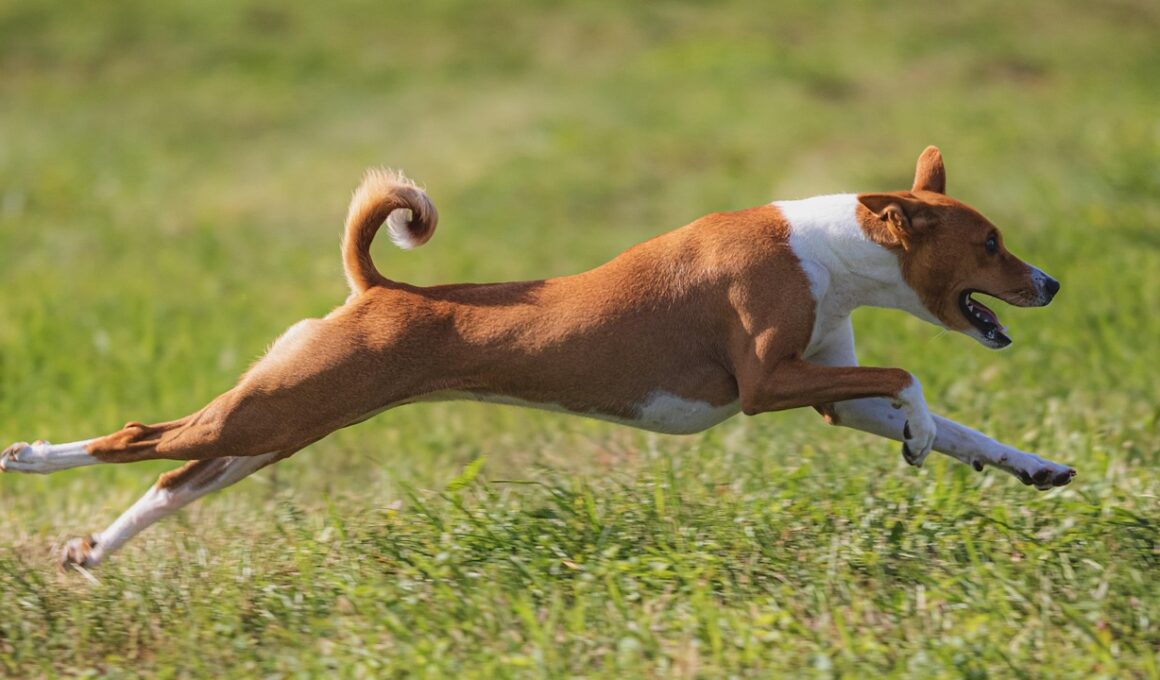How to Introduce Your Dog to Other Dogs at the Park
Introducing your dog to others at the park can be an enjoyable experience for both you and your pup. Proper socialization is crucial for their development. Begin by choosing a dog park that has a good reputation and is known for being safe. Be sure to visit at a time when the park is not overly crowded. A calmer atmosphere helps your dog think clearly and react appropriately to new furry friends. Before entering the park, ensure that your dog is on a leash and comfortable. This allows you to manage their initial interactions safely. Look for dog owners with friendly dogs who seem ready to mix. Gradually allow your dog to observe from a distance at first. This helps them feel secure. Watch your dog’s body language closely. Signs of comfort include a relaxed posture and a wagging tail. If your dog appears anxious or scared, give them time to acclimate. Remember, every dog is different, and some may take longer to feel at ease than others. Be patient, and respect their feelings throughout the introduction process.
Tips for a Successful Park Experience
To ensure a successful experience at the dog park, it’s essential to approach introductions with mindfulness. Always assess the park’s overall vibe and atmosphere. Look around for the behavior of other dogs and their owners. Are the dogs playing nicely, or is there tension? Before letting your dog off-leash, evaluate these factors carefully. If you notice overly aggressive behavior from other dogs, it’s best to wait. Once comfortable, unleash your dog carefully, and allow them to explore freely. Make sure to keep an eye on closely nearby areas. This way, you can intervene if any unsettling situation arises. Don’t rush the introductions; give all dogs time to sniff and greet each other naturally. An exciting game of tag can break the ice and ease their nerves. Additionally, remembering to supervise interactions between your dog and other dogs helps ensure a safe environment. Be vigilant about any correction signals from your dog. If they show signs of discomfort or fear, calmly redirect them. A positive and calm demeanor is vital in supporting your dog’s confidence during these engagements.
Every dog has unique social needs and preferences. Some may be more outgoing, while others are shy and cautious. Pay attention to your dog’s individual personality when introducing them to new friends at the dog park. Encourage positive interactions by rewarding your dog with treats and praise when they engage well. This helps reinforce the behavior you want to see. Choosing dogs that match your dog’s energy level can facilitate smoother introductions. For instance, pairing a high-energy dog with another similarly spirited one can lead to fun playtimes. Conversely, introducing a timid dog to a rowdy canine may lead to stress. Understanding each dog’s temperament can help create an enjoyable experience. In addition, always keep an eye out for signs of aggression or discomfort from any dog. If necessary, it’s best to separate dogs before misbehavior escalates. This way, all dogs remain safe and relaxed. Remaining observant and flexible during the introduction process is beneficial. Giving your dog space is paramount too. Allowing them to approach at their own pace will make the experience more empowering for them.
Managing Playtime and Tensions
As your dog becomes more comfortable in the dog park, you may witness their playtime becoming increasingly lively. Managing interactions is essential, especially if your dog begins to play aggressively or exhibits dominant behavior. Always watch for body language that indicates stress or discomfort from either dog. If you notice a change, don’t hesitate to step in and redirect behaviors. Sometimes, if tensions start to rise, it’s best to remove your dog from the situation. Reinforcing appropriate behaviors consistently will help your dog learn what is acceptable. Engaging in regular training sessions at home can complement park play. Positive reinforcement techniques can help your dog understand social cues. Observing your dog’s initial play style can provide insight into managing behavior during interactions. If your dog seems more reserved, encourage light activities to gradually build their confidence. As your dog enjoys the park and develops social skills, you will witness their growth. Always maintaining an active role during play helps in identifying issues before they escalate. Ultimately, creating a comfortable and enjoyable environment for your dog will promote healthy socialization.
Interaction protocols are essential when introducing dogs at the park. Common practices can foster positive dynamics and prevent conflicts. For example, allowing dogs to sniff each other is a natural instinct that helps them learn about one another. Define a structured approach to introductions among dogs, beginning potential meetings through calm observations. As both dogs acclimate to one another, allow brief interactions while assessing their comfort levels. It’s also helpful to ensure that dogs do not invade each other’s personal space too suddenly. Using toys as neutral ground can also ease initial tension. Throwing a ball can create a shared focus, allowing dogs to bond while engaged in play. Consistently redirecting your dog toward friendly interactions is vital. Alternate between unleashing and leashing them, depending on their comfort. Gradually easing them into the social atmosphere, so they can enjoy their park experience without overwhelming stress. In case of excessive barking or aggressive posturing, quickly redirect easy-going practices or separate the dogs. Continually shaping the playtime experience through careful monitoring will help your dog thrive socially.
When to Leave the Park
Knowing when to leave the park is as important as any other aspect of your dog’s socialization experience. Timing can make a significant difference in your dog’s comfort level and future willingness to engage with others. If you notice signs of exhaustion or stress, it may be time to call it a day. Watch for signals like panting, excessive drooling, or a drop in enthusiasm. These indicators can show your dog is overstimulated or tired, so leaving while they still enjoy their time is essential. Another point to consider is the overall atmosphere of the park. If you find the park crowded with aggressive or unruly dogs, it may be prudent to exit. Ensuring a positive experience each time helps reinforce good feelings toward the park. Additionally, leaving on a positive note can enhance your dog’s trust in you as their handler. Leaving the park before any stressful or challenging interactions can prevent negative associations in the future. Smooth park visits help motivate your dog to return and socialize again, positively impacting their behavior.
Dog parks can offer a wealth of social opportunities that benefit your furry friend immensely. Through careful introductions, persistent monitoring, and recognizing when to leave, a positive park experience can be curated. Each visit can help your dog develop skills that facilitate more profound confidence in their social interactions. Create a routine for your park visits, going at predictable times and ensuring regular exposure to various dogs. Eventually, your dog will become comfortable, navigating through different social settings. Maintaining social opportunities with other dogs can significantly improve their behavior at home, too. Engaging with familiar dogs will help build helpful social bonds while enhancing interactions beyond the park environment. Just remember to remain consistent with your approach to introductions. Gradually extending your dog’s social circle can create happier dogs overall. Boosting their comfort in social situations will benefit not just the park experience, but potentially their interactions with other pets or visitors in your home. As you create positive experiences in the park, you are setting your dog up for lifelong friendships and enriching their quality of life.
Conclusion
Dog socialization enhances not only their happiness but can also lead to healthier lifestyles overall. Successfully introducing your dog to other dogs at the park can establish foundations for thriving social skills throughout their life. With consistent, positive opportunities in the park, dogs can develop the best routines for play and interaction. Always prioritize their comfort and monitor their reactions to ensure enjoyable experiences. The more enjoyable your park trips become, the more your dog will look forward to these opportunities in the future. Building friendships takes time, but investing that time will yield exceptional benefits. Embark on this social adventure with your dog, and witness the joy they experience through enriching interactions with other dogs. An active social life is critical for dogs, as it promotes happiness and well-being. You might even find a few dog-loving friends yourself along the way as you bond over the shared joy of exploring the world of dog parks. Love, patience, and continuous practice are essential components. Happy socializing!


